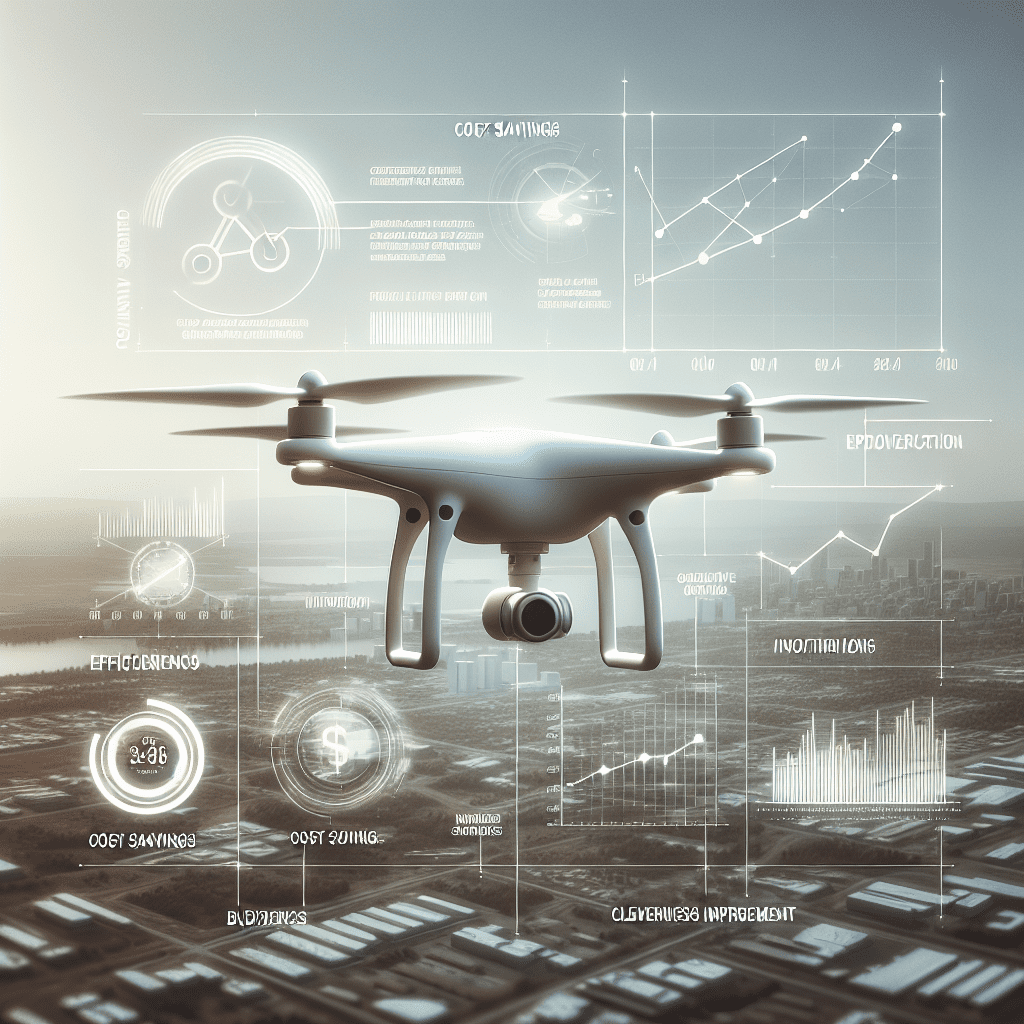Cost-Benefit Analysis of MEMAERO Drones for ROI
In This Article
- Conducting a cost-benefit analysis is essential for assessing the value of MEMAERO drone investments.
- Upfront costs are offset by substantial long-term efficiencies, safety improvements, and competitive advantages.
- Industries like construction, agriculture, and energy experience the most significant ROI from drone adoption.
- MEMAERO provides comprehensive tools and support to simplify the cost-benefit evaluation process.
- Customer success stories highlight dramatic cost savings and operational improvements.
- Market trends confirm drone tech is a strategic, futureproof investment for 2024 and beyond.
- Partnering with MEMAERO ensures continual performance through upgrades, training, and community access.
Understanding Drone ROI in Modern Business
Defining Cost-Benefit Analysis in Commercial Aviation
A cost-benefit analysis is a systematic approach used to evaluate the monetary and strategic value of an investment by comparing its costs with the expected benefits. In the realm of commercial aviation and drone technology, this evaluation becomes crucial as businesses seek to determine whether high-tech unmanned aerial solutions like MEMAERO drones represent a sound fiscal choice. It extends beyond financial metrics to consider operational efficiency, regulatory compliance, and competitive advantage.

The Upfront and Long-Term Costs of MEMAERO Drones
Analyzing Initial Investment vs Lifetime Value
When assessing drone adoption through a cost-benefit analysis, businesses often start by looking at initial expenditure. MEMAERO drones, for example, require an upfront cost that includes the drone unit itself, software licences, sensor packages, and any logistical deployment infrastructure. These costs can range significantly based on the model and intended usage.
However, to evaluate true cost-effectiveness, one must consider the full lifecycle value. This includes maintenance costs, battery replacement cycles, insurance, and ongoing training. The substantial long-term benefits, such as reduced labour costs, lower operational risks, and minimal environmental damage, often far outweigh these investments. Furthermore, MEMAERO’s comprehensive support and upgrade pathways ensure that the technology remains at peak performance across its lifespan.
“When evaluating MEMAERO’s drone systems, the initial cost quickly became irrelevant once we ran a proper cost-benefit analysis. The savings and efficiencies were unmatched.” – Logistics Director, UK-based eCommerce Firm
How MEMAERO Drones Enhance Efficiency
MEMAERO drones are engineered for superior efficiency across various operational paradigms. Equipped with AI-assisted flight controls, terrain-following capabilities, and automated route planning, they significantly reduce manual oversight. In logistics, these drones can complete inspections or deliveries in a fraction of the time taken by ground crews, increasing productivity while freeing human resources for higher-value tasks.
Moreover, real-time data analytics gathered during drone operations can be directly fed into enterprise resource planning (ERP) systems, accelerating decision-making. For construction sites, this means faster progress assessments. In agriculture, MEMAERO drones enable precise field monitoring and crop health analytics, which saves both time and resources on fertilisers and irrigation.
Use Cases: Sectors Benefiting Most from Drone Adoption
Industries that require frequent surveying, inspection, or rapid data capture receive the highest returns from drone integration. For instance, utilities companies can replace helicopter inspections of power lines with autonomous drone flights, slashing costs while enhancing safety. The oil and gas sector benefits from remote pipeline monitoring in areas too dangerous for human crews.
Construction is another major beneficiary. MEMAERO drones deliver orthomosaic mapping and volumetric analysis, useful for tracking earthworks progress, resource usage, or safety compliance. Meanwhile, agriculture firms leverage drones for crop scouting, seeding, and yield forecasting. Each use case reinforces the exceptional cost-benefit analysis results when MEMAERO drones are introduced into these environments.
Safety and Compliance: Hidden ROI from Risk Reduction
One of the less apparent yet significant components in a comprehensive cost-benefit analysis of MEMAERO drones is their impact on safety and regulatory compliance. Using drones reduces the need for personnel to perform hazardous tasks such as climbing communication towers or entering contaminated zones. This leads directly to fewer worker injuries, lower insurance claims, and decreased liability.
Additionally, compliance concerns are addressed proactively. MEMAERO drones feature real-time flight tracking, geofencing, and automatic record-keeping. These systems help organisations stay ahead of domestic and international aviation regulations, potentially saving thousands in legal penalties or downtime due to non-compliance.
Comparison Chart: Traditional Methods vs MEMAERO Efficiency
Traditional methods often rely heavily on labour-intensive activities. By contrast, MEMAERO drones automate and streamline these operations with remarkable precision. Below is a comparative illustration:
- Manual Roof Inspection: 3–4 hours + scaffolding vs Drone Survey: 25 minutes, zero scaffolding
- Pipeline Monitoring (Land): 2-person crew, 16 hours/day vs Drone Fleet: 4 hours with remote oversight
- Crop Health Check (20 acres): 2–3 days vs Drone Imaging: Single Day with AI Diagnosis
The time and cost savings evidenced by these examples underline the superior return-on-investment provided by MEMAERO technology.
Cost Savings Realised by Small to Medium Businesses
Contrary to popular belief, drone integration is not exclusive to major enterprises. Small and medium-sized businesses (SMBs) stand to benefit substantially from MEMAERO’s modular and scalable offerings. A proper cost-benefit analysis reveals quick paybacks for SMBs in sectors such as real estate, event security, agricultural co-operatives, and local logistics operations.
For example, a local estate mapping company reduced its personnel site visits by 70% through drone-based photogrammetry. Similarly, a regional farming co-op in Devon reports saving over £20,000 annually in irrigation and fertilisation costs by leveraging drone data analytics for precision agriculture.
Customer Testimonials: Real-World ROI Stories
Clients across multiple industries have attested to the measurable value of MEMAERO drones. One telecom firm operating across the UK noted a 45% reduction in infrastructure inspection time within six months. A construction company based in Manchester achieved a 30% improvement in project estimation accuracy by using MEMAERO drones for 3D mapping and terrain modelling.
Another notable story comes from a renewable energy company that utilised drones for wind turbine blade inspection. Their cost per inspection dropped from £1,200 (using humans and rope access) to under £300 with drones—a compelling result for any cost-benefit analysis. These real-world applications prove the technology’s value isn’t theoretical—it’s actively transforming industries.
Market Trends: Investing in Drone Technology in 2024+
Drone technology is accelerating across all market sectors. According to recent reports, the global commercial drone market is expected to reach £55 billion by 2030. In the UK alone, regulatory frameworks are being revised to better accommodate drone usage, indicating strong institutional support for further integration and investment.
Advanced drone platforms like those from MEMAERO are at the forefront of this evolution. AI-guided fleets, autonomous recharging stations, and centralised flight control dashboards are no longer future concepts; they are actively enhancing today’s enterprise operations. Businesses that delay investment could face competitive disadvantages in the form of outdated operational models and slower response times.
Tools to Conduct Your Own Cost-Benefit Evaluation
Performing a proper cost-benefit analysis requires both quantitative tools and strategic insight. MEMAERO provides potential clients with evaluation templates, drone deployment calculators, and ROI forecasting assistance. These tools enable decision-makers to model scenarios with different assumptions about usage frequency, terrain complexity, fuel offset, and manpower reductions.
Additionally, independent evaluators and financial consultants can assist with a third-party analysis to validate the numbers. Free resources, such as the UK’s Civil Aviation Authority guides and Deep dive into drone investment for disaster relief, offer frameworks for compliance-aware drone planning. Pairing these with MEMAERO’s in-house support builds a strong foundation for investment confidence.
Partnering with MEMAERO: Support, Training & Upgrades
Success in drone integration depends not only on the technology but also on the ecosystem surrounding it. This is where MEMAERO truly excels. Their onboarding consists of industry-specific training, live operational walkthroughs, and scenario planning assistance. They ensure that teams are not only compliant but also confident.
Furthermore, MEMAERO’s upgrade paths guarantee that clients benefit from the latest improvements without needing to reinvest in entirely new systems. This includes AI firmware updates, battery performance enhancements, and sensor module expansions. Companies partnering with MEMAERO also gain access to a global community of users, robust documentation, and dedicated support channels, ensuring the investment remains valuable in both the short and long term.
Conclusion: Making the Profitable Drone Decision
[CONCLUSION_CONTENT]
Great guide on the-cost-benefit-analysis-of-investing-in-memaero-drones – Community Feedback
What are the main benefits of investing in MEMAERO drones?
MEMAERO drones offer cost savings, improved safety, and highly accurate data, providing a strong return on investment for businesses.
How does cost-benefit analysis apply to drone investments?
Cost-benefit analysis weighs initial investment against long-term gains like efficiency, savings, and competitive advantage, helping businesses make smart purchase decisions.
Are MEMAERO drones suitable for small businesses?
Yes, MEMAERO drones can greatly benefit small businesses by reducing manual labor, improving safety, and increasing productivity.

